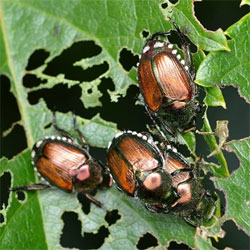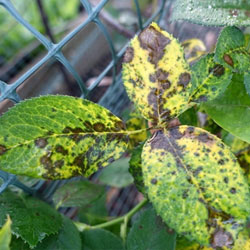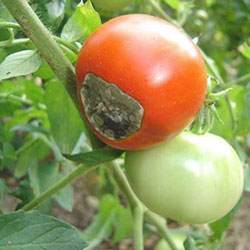Common summertime plant problems in the Midlands of South Carolina
Ok, so you’ve planted beautiful shrubs, trees, vegetables, annuals, and perennials…. and most are looking great! Of course, there are always going to be a few exceptions, those plants that just might not be thriving. You’ve planted correctly, fertilized, watered and done everything you should, so what gives??? Here are a few problems that we sometimes encounter, and solutions that will improve the “sick” situation:
YELLOW LEAVES – A very common problem when the weather gets hot and humid. Yellow leaves can result from watering too much, or not enough. In the Midlands, we are famous for sand and clay soils, neither of them being ideal for plants. Hopefully, you added soil amendment when you planted, and that should help hold moisture (sand) or improve drainage (clay), BUT… overwatering in clay-based soil and not watering enough in sand-based soil can be disastrous. The best way to stay on top of this, if you see yellowing foliage, is to check the soil moisture a day after you have watered, by digging down about 6-8 inches at the dripline around shrubs or trees, and 2-3 inches around vegetables, annuals or perennials. Back off on watering if the soil is too wet, and increase if it’s bone dry. When using an irrigation system, try measuring with a rain gauge or other measuring device to make sure the area is receiving an inch of water.
Iron deficiency, soil pH, and fungus can also cause yellow leaves. It’s a good idea to have the soil tested by Clemson Extension Service to identify any deficiencies in your soil. Sample bags and application forms are available at the Wingard’s checkout stations, and our staff will walk you through the process. If you’re watering appropriately and confident that any soil issues have been resolved, come in and talk to a Wingard’s staff member to diagnose and treat the problem.
 JAPANESE BEETLES – Thankfully, this little pest is creating havoc in the garden for only a few weeks, usually beginning mid-June, however, they can do quite a lot of damage in a short time, so it’s best to be on the lookout for them. They especially love roses, crape myrtles, hydrangeas, and hostas. The most effective approach to eliminate the Japanese Beetles is to use systemic pesticides and as the beetles feed, they ingest the poison in the leaves. There will be some leaf damage, but not nearly as much as with no treatment. Apply Ferti-Lome Tree & Shrub Drench in spring, or Bioadvanced 3-in-1 Insect, Disease & Mite Control in May before the beetles appear, and again in 30 days, if they are still hanging around. If you prefer the organic approach, use Spinosad Soap at the first sign of Japanese Beetles. DON’T use the traps/bags – they will attract beetles from your yard, as well as your neighbors’ yards, actually increasing the population.
JAPANESE BEETLES – Thankfully, this little pest is creating havoc in the garden for only a few weeks, usually beginning mid-June, however, they can do quite a lot of damage in a short time, so it’s best to be on the lookout for them. They especially love roses, crape myrtles, hydrangeas, and hostas. The most effective approach to eliminate the Japanese Beetles is to use systemic pesticides and as the beetles feed, they ingest the poison in the leaves. There will be some leaf damage, but not nearly as much as with no treatment. Apply Ferti-Lome Tree & Shrub Drench in spring, or Bioadvanced 3-in-1 Insect, Disease & Mite Control in May before the beetles appear, and again in 30 days, if they are still hanging around. If you prefer the organic approach, use Spinosad Soap at the first sign of Japanese Beetles. DON’T use the traps/bags – they will attract beetles from your yard, as well as your neighbors’ yards, actually increasing the population.
Japanese Beetles lay their eggs in the lawn, and grubs develop as the immature growth stage and remain in the soil for 3 years. A good way to reduce the number of beetles in your landscape is to eliminate the grubs by applying Ferti-lome/Hi Yield Grub Free Zone to the lawn.
DISEASE/FUNGUS

 BLACK SPOT – If you have Hybrid Tea roses, you are familiar with this fungus. Because of the humidity in this neck of the woods, as well as overhead watering by sprinklers, Black Spot really gets going in the summer months. Other plants such as fruit trees, annuals, and perennials are susceptible, too, however, roses are typically hit hard.
BLACK SPOT – If you have Hybrid Tea roses, you are familiar with this fungus. Because of the humidity in this neck of the woods, as well as overhead watering by sprinklers, Black Spot really gets going in the summer months. Other plants such as fruit trees, annuals, and perennials are susceptible, too, however, roses are typically hit hard.
POWDERY MILDEW – Not all, but certain varieties of Crape Myrtles are prone to this fungus. Dogwoods and roses may also be vulnerable. The white powdery spores are apparent as the new foliage matures in spring. Powdery Mildew can affect the bloom cycle, and if allowed to survive from year to year, it may have an adverse effect on the overall health of the plant.
Treatment for Black Spot and Powdery Mildew is the same. Here’s what you need to do:
- Remove the diseased leaves or branches to minimize spread, including any that have fallen to the ground.
- Treat with a contact fungicide (kills on contact) AND a systemic fungicide (works through the roots and foliage). We recommend: Ferti-lome Broad Spectrum Landscape & Garden Fungicide and Ferti-lome 2-N-1 Systemic Insect & Disease Protection.
- As a preventive measure for Roses, Crape Myrtles, and Dogwoods, apply Ferti-lome Copper Soap Fungicide (organic) in spring as soon as new growth appears.
- Prune interior branches to eliminate crowding. A little breathing room is needed to let in the air and sun; darkness and moisture provide a great breeding ground for fungus.
- Use drip irrigation if possible, and water in the early morning, NOT AT NIGHT.
If watering by hand, aim for the ground, rather than the foliage.
If you’re dealing with either of these diseases on a tree that is too tall to reach with a ladder, call a pro…. Jim Dicker, Tree Care Services of Lexington (803) 206-2540.
 BLOSSOM END ROT – The cause of this disorder is a calcium deficiency in the developing fruit. Extreme fluctuations in moisture, rainy or cloudy weather with high humidity, cool temperatures, insufficient soil calcium, root pruning from nearby cultivation, and excessive ammoniacal nitrogen, potassium, or magnesium fertilization can also increase the chances of blossom end rot, especially early in the season. A soil test in January is advised for in-ground gardening to address the deficiencies; follow the recommendations for soil additives if needed and the soil will be ready for planting in spring. For most container gardens, adding Calcium Nitrate at time of planting and 2 weeks after will prevent Blossom End Rot. If no pre-treatment is done, and Blossom End Rot shows up on your first harvest of tomatoes, spray foliage with Ferti-lome Yield Booster, a liquid calcium treatment and the next round of tomatoes should be OK. For more information on this and other tomato diseases, click here Tomato Diseases & Disorders | Home & Garden Information Center (clemson.edu)
BLOSSOM END ROT – The cause of this disorder is a calcium deficiency in the developing fruit. Extreme fluctuations in moisture, rainy or cloudy weather with high humidity, cool temperatures, insufficient soil calcium, root pruning from nearby cultivation, and excessive ammoniacal nitrogen, potassium, or magnesium fertilization can also increase the chances of blossom end rot, especially early in the season. A soil test in January is advised for in-ground gardening to address the deficiencies; follow the recommendations for soil additives if needed and the soil will be ready for planting in spring. For most container gardens, adding Calcium Nitrate at time of planting and 2 weeks after will prevent Blossom End Rot. If no pre-treatment is done, and Blossom End Rot shows up on your first harvest of tomatoes, spray foliage with Ferti-lome Yield Booster, a liquid calcium treatment and the next round of tomatoes should be OK. For more information on this and other tomato diseases, click here Tomato Diseases & Disorders | Home & Garden Information Center (clemson.edu)
There’s Always Something Blooming at Wingard’s!

